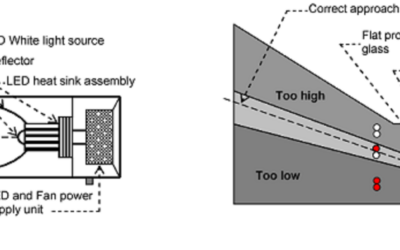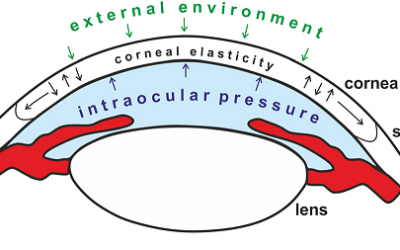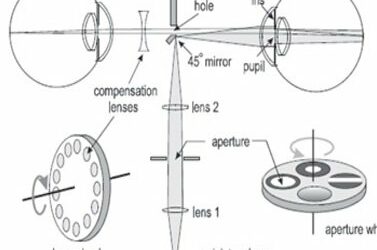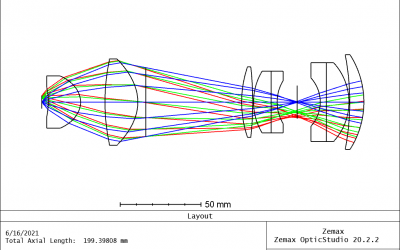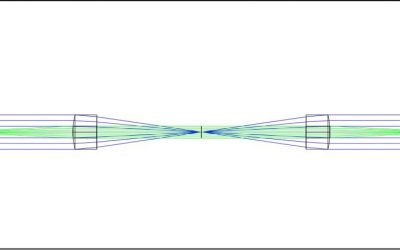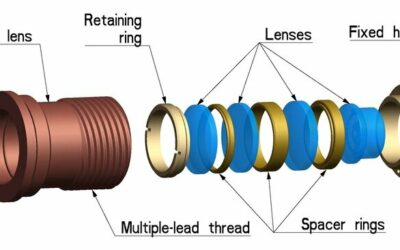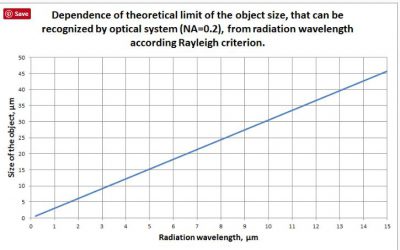Work experience and proven skills in ray tracing and optimization are important for good optical engineers, so ask potential candidates for examples of their work in these areas before you hire them.
optics consulting
5 Tricks to Control Stray Light
by Victor Argueta | Uncategorized
Stray light is a major limiting factor in many imaging systems. When stray light enters the system, it degrades the signal-to-noise ratio or contrast ratio, making it more difficult to obtain accurate images. There are many ways to prevent stray light in an optical system. In this article we will review five.
Understanding the optics behind a PAPI light
by Victor Argueta | illumination, illumination lens design, LED, optical design
In a previous article we talked about Aviation Light Optics. and discussed a runway light system called Precision Approach Path Indicator (PAPI). Now we would like to go more in detail into PAPI design and describe their design requirements. The PAPI system...
Non-Contact Tonometers
by Victor Argueta | FAQ, Opthalmology, optics, Victor Argueta
This will be the last entry in our series of optical instrumentation for optometry. If this is the first article that you are seeing, I would suggest that you take a look at our previous articles about Ophthalmoscope Design, Keratometer Design, and Retinoscopy. This...
Ophthalmoscope Optical Layout
by Victor Argueta | FAQ, Opthalmology, Victor Argueta
In the next couple of articles, we will talk about the different instrumentation used by ophthalmologists and optometrists. As you can imagine, there are many restrictions when designing an optical instrument that will be used in a patient. It matters whether the...
Projection Lens Design
by Victor Argueta | illumination lens design, lens design, optical design, Zemax
Projection systems are one of the most common consumer optical devices (probably second to photographic systems). They allow us to view images on a screen (usually) by magnifying and projecting them at distances from a few centimeters to several meters away...
Deciphering 4f Optical Systems: A Journey into Fourier Optics
by Victor Argueta | lens design consulting, OFH, optics, optics definitions
Introduction A 4F optical system is a system architecture that uses Fourier Optics. In this article, we will explain why we need them and how to design a simple 4f correlator. We will leave out most of the mathematical derivations, but if you are interested...
Mastering Relay Lens Design: Enhancing Optical Systems | OFH
by Victor Argueta | FAQ, lens design consulting, Zemax
Introduction Optical relays, an integral component of various optical systems, play a crucial role when the user's proximity to the observed object is limited or when specific image transformations are required. A prevalent example of this is found in relay lenses,...
Understanding Opto-Mechanical Design: Examples and Definitions
by John | lens design, opto-mechanical design
Opto mechanical design overview and definitions In an opto-mechanical design we work on the positioning of optical elements such as lenses, filters, beamsplitters, reflectors, and diffractive elements in mechanical structures that will allow the optical...
Distinctive design features of infrared optical systems
by SergeySidorovich | Uncategorized
A designer of an IR optical system needs to account for key specifications that greatly impact the complexity of the device construction and its production cost. The most important requirements are described below. The maximum achievable theoretical resolution in...
What we’re reading: 3D display advances
by John | Uncategorized
Hello from Optics for Hire, where the topic of 3-D display has been coming up even more than usual. At the moment, the clouds over Arlington are trying to figure out how much snow to deposit on Mass Ave. Feels like the right mood to share a few of the things...


